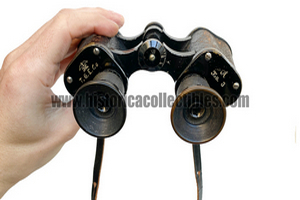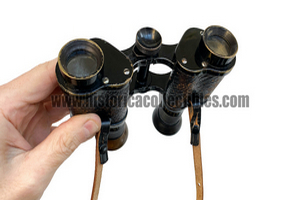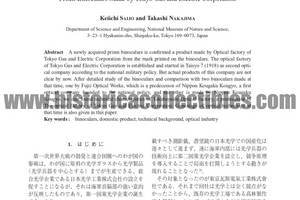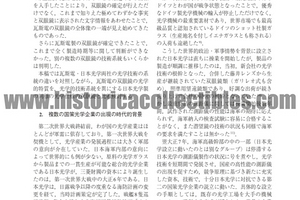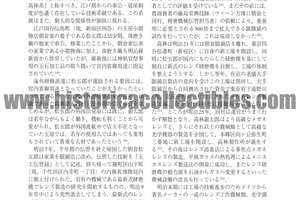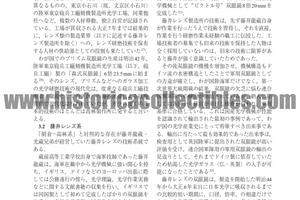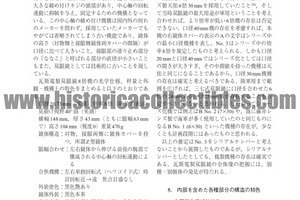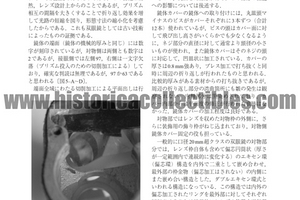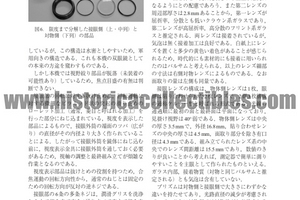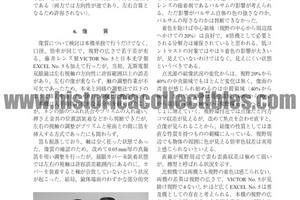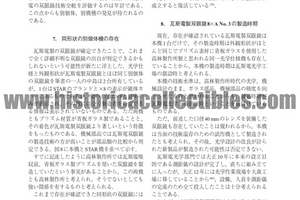Binoculars 8x21 T.G.E.Co - Tokyo Gas and Electric Corporation, about 1900
8x21 binoculars made by T.G.E.Co. - Tokyo Gas and Electric Corporation - Japan - Company established in 1885 by Shibusawa Eiichi and Asano Sōichirō, after having acquired from the Tokyo Prefecture gas office, some activities which dealt with the distribution and sale of gas and electricity. Subsequently its establishment, TGECo - Tokyo Gas and Electric Corporation, expanded its commercial interests and acquired many other companies not strictly related to the gas and electricity trade/distribution including, in 1897, the Takabayashi Optical Factory, located in the Tokoro district, which was specialized in the production and polishing of lenses, prisms etc etc.
After careful study which goes beyond the "TGECo" mark embossed on the left plate, researchers Keiichi SAIJO and Takashi NAKAJIMA of the Science and Engineering Department of the National Museum of Nature and Science, 3–23–1 Hyakunin-cho , Shinjuku-ku - Tokyo 169–0073, thanks to the comparison with two other binoculars of the same period, one made by Fujii Lens Mfg and the other by Nippon Kougaku Kougyo, have identified in this specimen the typical constructive technical characteristics found in the optics developed in its first productions, by Takabayashi Optical Factory, a manufacturer of lenses which was acquired by the "T.G.E.Co." Tokyo Gas and Electric Corporation, shortly after its establishment in 1897. Despite this, the small number of optics produced by Takabayashi Optical Factory, they were marked and identified with the TGECo - Tokyo Gas and Electric Corporation logo.
It was only in 1918 (i.e. the 7th year of the Taishò era) that TGECo - Tokyo Gas and Electric Corporation and Takabayashi Optical Factory, established Tokyo Gas Denki Kogyo Co. Ltd which became the second Japanese national company for optical production after Nippon Kougako Kougyo, established by Fujii Optical Works and Nikon Kougako on the eve of the First World War (1914).
Tokyo Gas Denki Kogyo Co. Ltd. had specialized internal workers at its disposal, composed mainly of many naval engineers who had tools, technologies and knowledge at their disposal to start the design and construction of large naval optics. Against this, the production of a rangefinder prototype to be installed on large warships was started. However, although it was completed and purchased by the Navy, there were no subsequent orders for optical instruments due to the limitations imposed on Japan by the Treaty of Versaille for its co-belligerence alongside the Triple Entente, from 1914 to 1918.
Against this, the entry into the production of optics for military use quickly ended in bankruptcy and the company Tokyo Gas Denki Kogyo Co. Ltd, due to the default of short-term financing, was forced to close.
In conclusion of the above, it is evident that these binoculars were undoubtedly built between 1897 and 1918, the year after which T.G.E. Co and Takabayashi Optical Factory, founded Tokyo Gas Denki Kogyo Co. Ltd. More specifically, thanks to researchers Keiichi SAIJO and Takashi NAKAJIMA who found technical-optical characteristics of the first Takabayashi Optical Factory production, it can be said that it was certainly produced between 1897 and 1899 and should therefore be considered as the first prismatic binoculars built entirely in Japan.
Since the documentable material on this specific perspective is very scarce (it is not even available from Takabayashi Seisakusho, the Tokyo academic society of technology) the two researchers have extracted a lot of technical data from these binoculars which we limit ourselves to mentioning just a few:
8x Magnification - Objective diameter 20.73 mm effective measurement (nominal 21), apparent field of view is less than 40°. Its width is 148 mm and height 104 mm, its weight is 470 grams.

